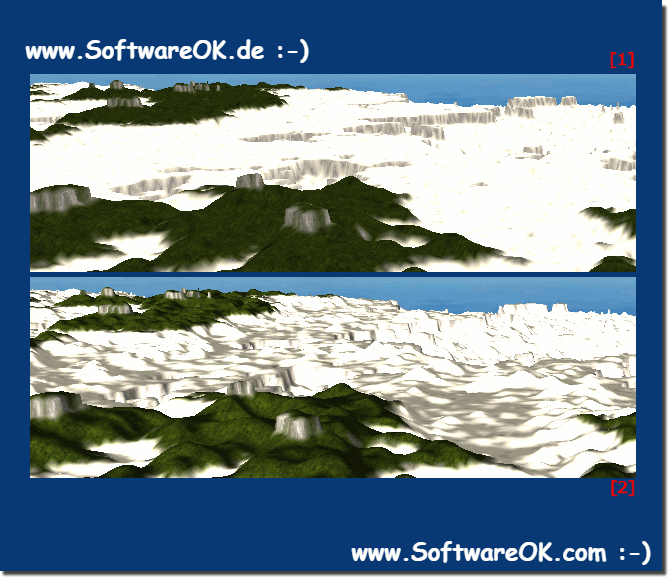The shades are the dark and light areas created by the incidence of light!Contents: 1.) ...Shading simply explained! 2.) ...More thoughts and information about shading! 1.) The shades simply explained!The shading is one of the most important aspects of the perception of depth in the environment, and this is also an important aspect in 3D representation. Compared to shadows, the shading is quite easy to calculate and requires hardly any computing time, but gives the landscape a much more realistic impression. The shadows are quite computationally intensive and are not as meaningful in terms of representation as correct shading, and the shadows can actually never be calculated absolutely correctly! Here in the picture above you can see the landscape without shading and below with shading, it is a 3D.Benchmark.OK screenshot! ( ... see picture-1 point 1 and 2 ) See also: ► 3D C++ C shadows in OpenGL and DirectX!
2.) More thoughts and information on shading!Shades generally refer to varying degrees or gradations of color, brightness, or intensity in an image, graphic, painting, or other visual element. Shades are often used to create depth, dimension, and realism in visual representations. Here are some common types of shades: Color shading: This refers to the use of different tints or shades of color to identify objects or areas in the image. For example, adding shades of different tones of blue can make a sphere appear round and three-dimensional. Luminosity shading: This refers to the variations in the brightness of colors. Adding gradations of light and dark can help emphasize shapes and textures in an image. For example, a bright beam of light on a dark background is shown as a brightness shading. Shadows: Shadows are a special form of shading created by blocking light. They can be used to show the position of objects in relation to light sources and to create depth in a scene. There are different types of shadows, such as drop shadows (the shadow an object casts on a surface) and self or form shadows (the shadows on an object itself). Texture shading: This refers to the use of shades to show the texture of surfaces. For example, shading can be used to capture the appearance of wood grain, skin pores, or other details. Emotional shading: In literature and film, the term "shading" is sometimes used to describe the subtle nuances in the portrayal of characters or emotions. For example, a character in a story may have many shades of fear or happiness depending on the circumstances. Overall, shading is an important part of fine art and design as it helps convey realism, depth and meaning in visual representations. FAQ 109: Updated on: 26 February 2025 08:33 |
| ||||||||||||||||||||||||||||||||||||||||||||||||||||||||||||||||||||||||||||

